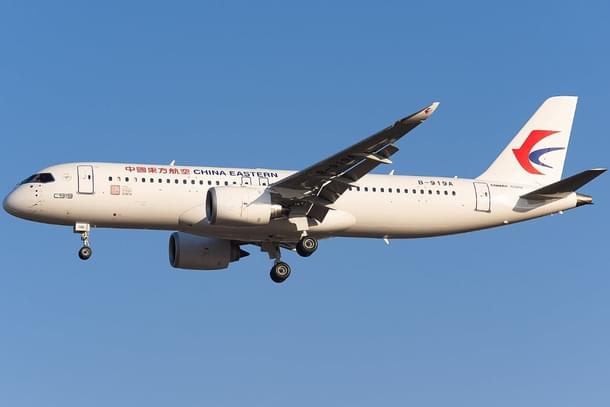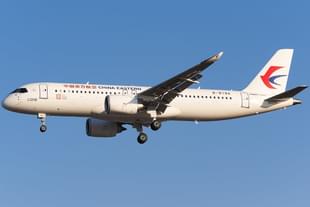News Brief
China’s C919 Passenger Jet Faces 3–6 Year Wait For EU Safety Approval, Slowing Its Bid to Enter International Markets
Kuldeep Negi
May 01, 2025, 01:57 PM | Updated 01:57 PM IST
Save & read from anywhere!
Bookmark stories for easy access on any device or the Swarajya app.


China's bid to push its homegrown C919 passenger jet into international markets has hit a regulatory speed bump, with the European Union Aviation Safety Agency (EASA) stating that certification for the aircraft will not be granted in 2025 — potentially taking up to six years, South China Morning Post (SCMP) reported.
EASA executive director Florian Guillermet told French publication L’Usine Nouvelle that the timeline for approving the Commercial Aircraft Corporation of China’s (Comac) C919 would fall somewhere between three to six years.
Certification by EASA is critical for any manufacturer looking to sell aircraft to European carriers.
“As we informed them officially, the C919 cannot be certified in 2025 … We should be certifying the C919 within three to six years,” Guillermet said.
The delay does not appear to have dampened Comac’s domestic momentum.
Since entering commercial service in May 2023, the C919 has reportedly flown over one million passengers on Chinese routes as of January 2025.
The company secured more than 300 firm orders in 2024 from Chinese airlines and has begun flying routes in both mainland China and Hong Kong.
The jet has also been showcased at global aviation expos to court overseas buyers.
Still, European certification is seen as a litmus test for global credibility.
Aviation experts cited in the SCMP report said the extended timeline reflects the thoroughness of the approval process rather than an outright rebuff.
Eric Lin, head of Greater China research at UBS, called the three-year baseline normal but noted that a six-year delay would be unusually long — especially with interest already expressed by international carriers such as Ireland’s Ryanair.
A key part of the evaluation will include in-service performance in extreme weather conditions within Europe.
Engine certification is also expected to take time due to the need to verify flame resistance, structural configuration, and emergency evacuation standards.
The single-aisle C919, which can fit up to 192 seats, reportedly closely matches the Airbus 320 or Boeing 737 aircraft families in terms of technical capability.
Its smaller predecessor the C909, formerly known as the ARJ21, mostly flies regional routes in China and Southeast Asia. Laos and Vietnam cleared it this year for leases by local carriers.
For now, while China continues to build the C919’s reputation in Southeast Asia and beyond, full entry into Western markets will remain a long-haul journey.
Also Read: Delhi-Meerut RRTS Nears Completion As Final 17-Km Meerut Section Gears Up For Trial Runs
Kuldeep is Senior Editor (Newsroom) at Swarajya. He tweets at @kaydnegi.





